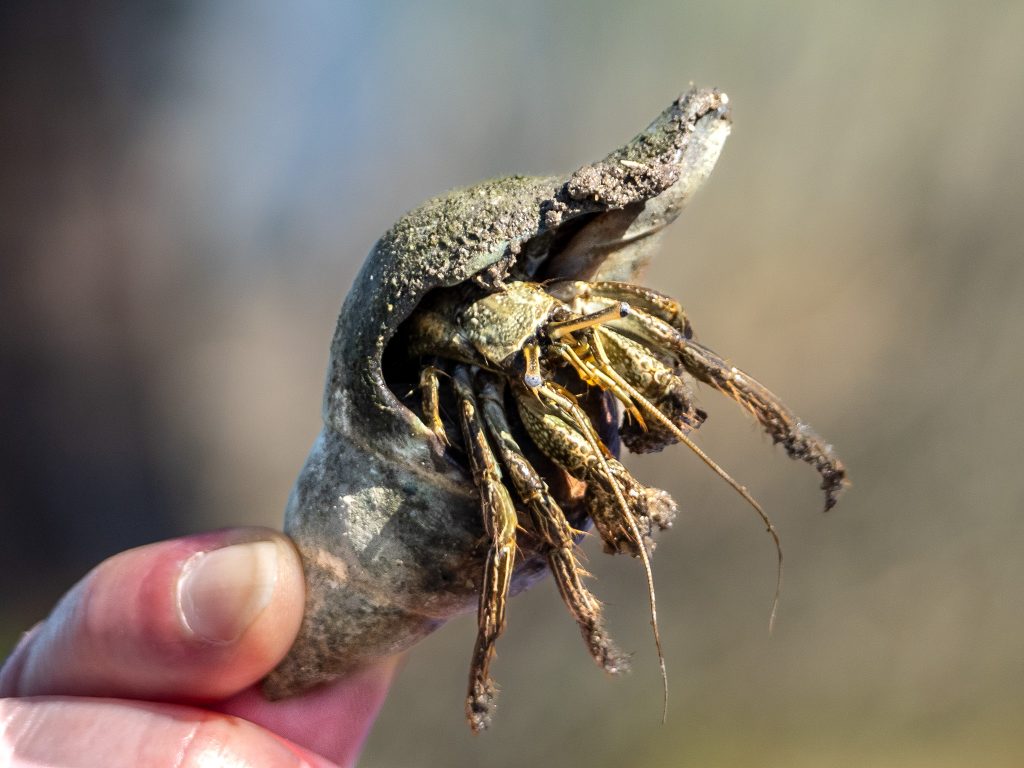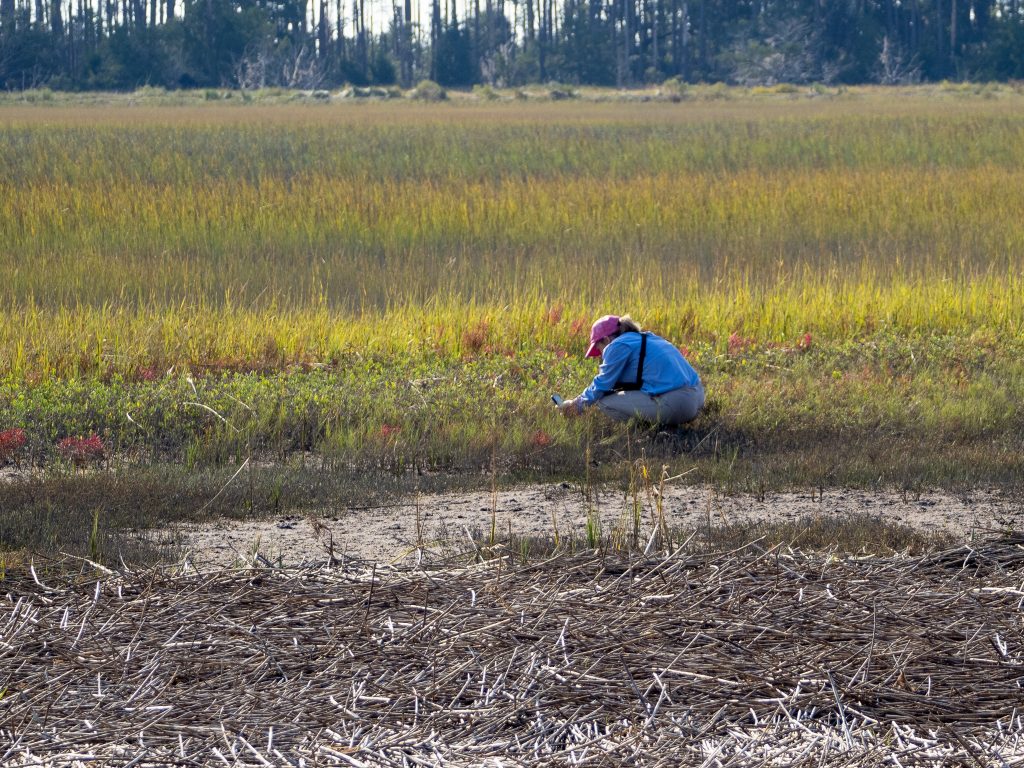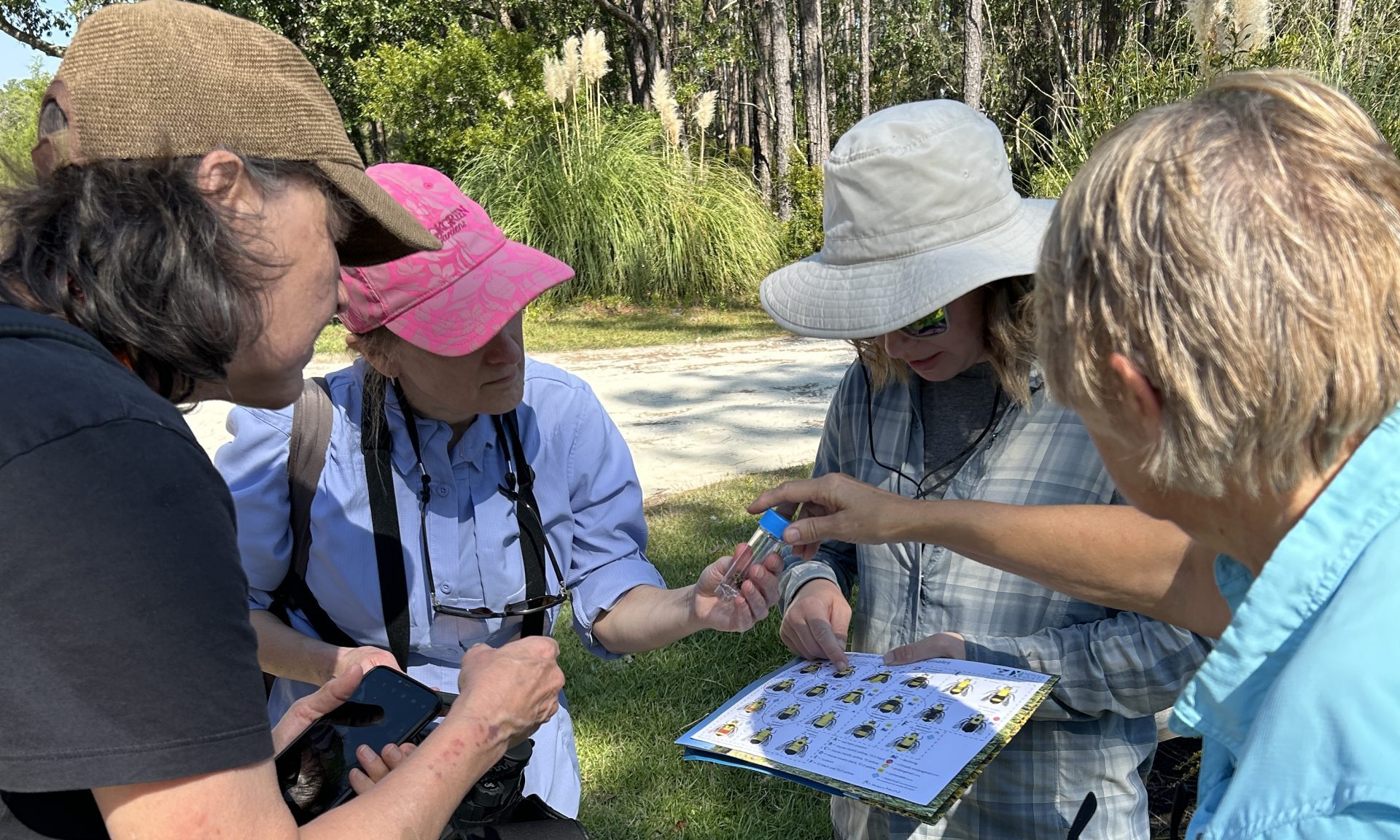Winyah Master Naturalists Document Biodiversity in North Inlet
It is a very specific question: What species could you find in
and around North Inlet on October 14th, 2024, between 8 AM and 3PM?

A group of 9 volunteers, mostly Winyah Master Naturalist graduates, set out through the marshes and forest edges of the estuary to find out the answer on beautiful early fall day. To take a ‘snapshot’ of biodiversity, they listened for birds, looked at leaves, followed butterflies, and squatted down to peer at the marsh mud to make a record of all living things they could document in nature in this defined amount of time and space.

Event-based volunteer biodiversity studies, also called BioBlitzs, are becoming popular because they can be used not only to create species inventories and potentially find previously undocumented species, but they also can help to break down barriers to engagement with science. The term BioBlitz itself is relatively new, credited to the US National Park Service for a 1996 event in the suburbs of Washington DC. Today, a search of the term ‘bioblitz’ in iNaturalist returnes over 10,000 projects, and about 4,640 articles in Google Scholar.
Participants, including professional scientists and communicators, volunteer experts, and amateur naturalists, share expertise and learn from each other and build community over a mutual enthusiasm for the nature around us. The data from local BioBlitz events also contribute records that can be used in local, regional and even global research and conservation projects, and can serve as a catalyst for further research and biodiversity studies.

The participants in the North Inlet BioBiltz recorded their observations using two online platforms- iNaturalist and eBird. iNaturalist is an online crowdsourced species identification system and social network of people sharing biodiversity information to help each other learn about nature. eBird is an online database of bird observations providing scientists, researchers and amateur naturalists with real-time data about bird distribution and abundance. While iNaturalist requires evidence in the form of a photo or sound to record an observation, eBird gathers data in the form of checklists. Since many bird observations are made by sound or of birds difficult to photograph, using both iNaturalist and eBird can help to increase the ease of recording observation data during a bioblitz.
- Learn more at inaturalist.org and ebird.org.
The North Inlet BioBlitz volunteers recorded 120 observations covering 87 species in iNaturalist. Most of the species (49%) were plants, but they also recorded 6 species of mollusks, 13 insect species, and 10 fishes with the help of the Baruch Marine Field Lab staff who seined at Oyster Landing. Additionally, 37 species of birds were recorded on the eBird checklist, including a lone Roseate Spoonbill hanging out with some Wood Storks. This is a lot of species for a small group of people to document in one day, however species lists for North Inlet compiled by researchers and students document 276 species of birds, 356 vascular plants, and 347 insects including 87 butterflies, and while the BioBlitz team only recorded 1 reptile (a Six-lined Racerunner) and no amphibians, there could possibly be over 80 species of amphibians and reptiles hiding out.
The results of the BioBlitz show that while this may not be the most effective method of completing a comprehensive biodiversity study, it does underscore the small percentage of the natural world around us that we see daily. The vastness of the unseen natural world can be a fun thing to think about the next time you go for a hike, or even walk out into your yard, but also reminds us of the importance of habitat conservation for supporting biodiversity.
eBird Checklist, October 14, 2024
Clapper Rail (Rallus crepitans)
Spotted Sandpiper (Actitis macularius)
Laughing Gull (Leucophaeus atricilla)
Wood Stork (Mycteria americana)
Double-crested Cormorant (Nannopterum auritum)
White Ibis (Eudocimus albus)
Roseate Spoonbill (Platalea ajaja)
Tricolored Heron (Egretta tricolor)
Snowy Egret (Egretta thula)
Great Egret (Ardea alba)
Great Blue Heron (Ardea herodias)
Turkey Vulture (Cathartes aura)
Osprey (Pandion haliaetus)
Northern Harrier (Circus hudsonius)
Bald Eagle (Haliaeetus leucocephalus)
Belted Kingfisher (Megaceryle alcyon)
Yellow-bellied Sapsucker (Sphyrapicus varius)
Red-bellied Woodpecker (Melanerpes carolinus)
Downy Woodpecker (Dryobates pubescens)
Northern Flicker (Colaptes auratus)
Eastern Phoebe (Sayornis phoebe)
Blue Jay (Cyanocitta cristata)
Carolina Chickadee (Poecile carolinensis)
Tufted Titmouse (Baeolophus bicolor)
Tree Swallow (Tachycineta bicolor)
Ruby-crowned Kinglet (Corthylio calendula)
Brown-headed Nuthatch (Sitta pusilla)
Carolina Wren (Thryothorus ludovicianus)
Northern Mockingbird (Mimus polyglottos)
Saltmarsh Sparrow (Ammospiza caudacuta)
Eastern Towhee (Pipilo erythrophthalmus)
Red-winged Blackbird (Agelaius phoeniceus)
Boat-tailed Grackle (Quiscalus major)
American Redstart (Setophaga ruticilla)
Palm Warbler (Setophaga palmarum)
Pine Warbler (Setophaga pinus)
Northern Cardinal (Cardinalis cardinalis)



